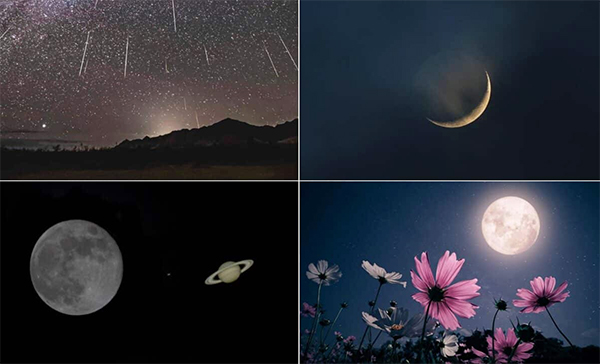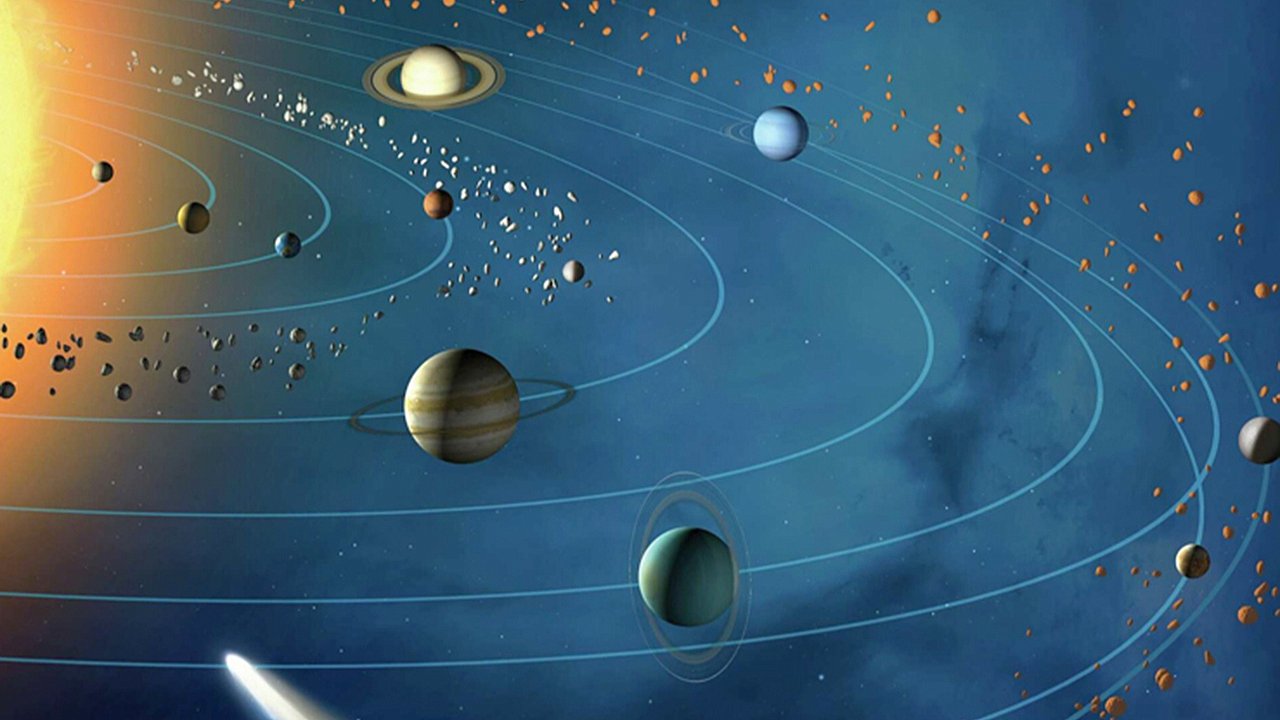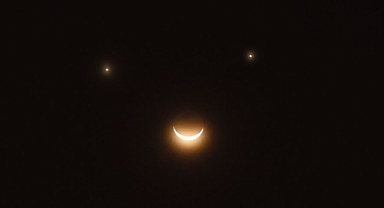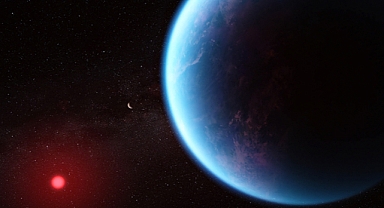Celestial Wonders Fill May’s Skies with Unforgettable Views
May 2025 brings a treasure trove of celestial phenomena, making it a spectacular month for amateur astronomers and night-sky enthusiasts alike. From ghostly Saturn rings to glowing meteor trails and dazzling planet-moon pairings, the sky will host nine extraordinary events, many visible with the naked eye. Whether you're equipped with a telescope or just your curiosity, this month offers plenty of reasons to stay up late and look skyward. Here's what to watch and when. A Twilight Trio: Mars, Moon, and the Beehive Cluster – May 3
A Twilight Trio: Mars, Moon, and the Beehive Cluster – May 3
On the evening of May 3, just after sunset, look west to spot a graceful celestial arrangement featuring the crescent moon, Mars, and the Beehive Cluster (Messier 44). This open cluster, located about 600 light-years away in the Cancer constellation, will glitter like cosmic dew through binoculars. Mars will add a reddish hue to the trio, creating a peaceful but vivid scene in the fading twilight. It's a perfect night for astrophotography or simple stargazing.Meteor Magic: The Eta Aquariids Peak – May 5–6
Originating from Halley’s Comet, the Eta Aquariid meteor shower will reach its peak in the early hours of May 6, with viewing best after midnight. Expect to see 10 to 20 meteors per hour under dark skies. These meteors are known for their swift speeds and luminous trails, and with minimal moonlight interference this year, conditions are ideal for a dazzling sky show. The southern hemisphere and equatorial regions will see the best activity.Saturn’s Rings Disappear in Rare Edge-On View – May 6
On May 6, Saturn reaches its equinox, a rare occurrence that happens about once every 15 years. As the sun aligns with Saturn’s equator, its iconic rings tilt to an edge-on perspective from Earth. This makes them appear razor-thin and nearly invisible, even through powerful telescopes. For a short window, observers will witness a rare and ghostly view of the planet where its most famous feature temporarily vanishes.A Galactic Fossil: Messier 5 at Peak Visibility – May 11
One of the oldest and largest globular clusters in our galaxy, Messier 5 (M5), will be at its best viewing height on the night of May 11. Containing over 100,000 stars packed tightly in a spherical formation, M5 is over 13 billion years old. Through a telescope, it looks like a sparkling snow globe of ancient stars—offering a glimpse into the early history of the Milky Way. Look for it in the constellation Serpens.May’s Micromoon: The Distant Flower Moon Rises – May 12
The Flower Moon, named for the spring blossoms in the Northern Hemisphere, rises on May 12. This year’s full moon is also a micromoon, occurring at the Moon’s apogee—its farthest point from Earth. While it appears slightly smaller and dimmer than a typical full moon, its soft glow makes for stunning moonlit landscapes and contemplative nighttime walks. It's ideal for nature lovers and lunar photographers.Moon Meets Saturn at Dawn – May 22
Set your alarm early on May 22 to catch a close conjunction between the waning crescent moon and Saturn, separated by just 2.5 degrees. This pre-dawn pairing will be visible in the southeastern sky and is best seen with binoculars. Although not close enough to share a telescope field of view, the proximity creates a striking visual for anyone watching the early morning sky.Deep-Sky Stargazing Perfected – May 26
The new moon on May 26 means the darkest skies of the month—ideal for observing distant galaxies, nebulae, and star clusters. Without moonlight interference, conditions are perfect for serious stargazers to explore the cosmos. Head to a location with minimal light pollution to fully enjoy the Milky Way, the Virgo Cluster, and other deep-sky objects rarely visible with such clarity.Closest Globular Cluster: Messier 4 in View – May 28
On May 28, look toward the east after sunset to see Messier 4 (M4), the nearest globular cluster to Earth, located just 5,500 light-years away in the constellation Scorpius. M4 is situated right next to the bright red star Antares, making it easy to find. A moderate telescope reveals a glowing cluster of white dwarfs and other ancient stars—some among the oldest ever observed.Venus Shines Brightest in the Morning Sky – May 31
Venus, often called the morning star, will reach its greatest western elongation on May 31, placing it high in the pre-dawn sky. This is one of the best times of the year to observe the planet, which outshines every celestial body except the sun and moon. It will be unmistakable before sunrise, gleaming like a beacon and visible without any equipment.Don’t Miss These May Marvels
From planetary conjunctions and disappearing rings to ancient star clusters and blazing meteors, May 2025 is overflowing with celestial beauty. Most of these events are visible to the naked eye, but a pair of binoculars or a backyard telescope can take your experience to the next level. Whether you're a seasoned astronomer or a skywatching novice, there's no better time to step outside and marvel at the universe above.
May 2025 brings a treasure trove of celestial phenomena, making it a spectacular month for amateur astronomers and night-sky enthusiasts alike. From ghostly Saturn rings to glowing meteor trails and dazzling planet-moon pairings, the sky will host nine extraordinary events, many visible with the naked eye. Whether you're equipped with a telescope or just your curiosity, this month offers plenty of reasons to stay up late and look skyward. Here's what to watch and when.
 A Twilight Trio: Mars, Moon, and the Beehive Cluster – May 3
A Twilight Trio: Mars, Moon, and the Beehive Cluster – May 3On the evening of May 3, just after sunset, look west to spot a graceful celestial arrangement featuring the crescent moon, Mars, and the Beehive Cluster (Messier 44). This open cluster, located about 600 light-years away in the Cancer constellation, will glitter like cosmic dew through binoculars. Mars will add a reddish hue to the trio, creating a peaceful but vivid scene in the fading twilight. It's a perfect night for astrophotography or simple stargazing.Meteor Magic: The Eta Aquariids Peak – May 5–6
Originating from Halley’s Comet, the Eta Aquariid meteor shower will reach its peak in the early hours of May 6, with viewing best after midnight. Expect to see 10 to 20 meteors per hour under dark skies. These meteors are known for their swift speeds and luminous trails, and with minimal moonlight interference this year, conditions are ideal for a dazzling sky show. The southern hemisphere and equatorial regions will see the best activity.Saturn’s Rings Disappear in Rare Edge-On View – May 6
On May 6, Saturn reaches its equinox, a rare occurrence that happens about once every 15 years. As the sun aligns with Saturn’s equator, its iconic rings tilt to an edge-on perspective from Earth. This makes them appear razor-thin and nearly invisible, even through powerful telescopes. For a short window, observers will witness a rare and ghostly view of the planet where its most famous feature temporarily vanishes.A Galactic Fossil: Messier 5 at Peak Visibility – May 11
One of the oldest and largest globular clusters in our galaxy, Messier 5 (M5), will be at its best viewing height on the night of May 11. Containing over 100,000 stars packed tightly in a spherical formation, M5 is over 13 billion years old. Through a telescope, it looks like a sparkling snow globe of ancient stars—offering a glimpse into the early history of the Milky Way. Look for it in the constellation Serpens.May’s Micromoon: The Distant Flower Moon Rises – May 12
The Flower Moon, named for the spring blossoms in the Northern Hemisphere, rises on May 12. This year’s full moon is also a micromoon, occurring at the Moon’s apogee—its farthest point from Earth. While it appears slightly smaller and dimmer than a typical full moon, its soft glow makes for stunning moonlit landscapes and contemplative nighttime walks. It's ideal for nature lovers and lunar photographers.Moon Meets Saturn at Dawn – May 22
Set your alarm early on May 22 to catch a close conjunction between the waning crescent moon and Saturn, separated by just 2.5 degrees. This pre-dawn pairing will be visible in the southeastern sky and is best seen with binoculars. Although not close enough to share a telescope field of view, the proximity creates a striking visual for anyone watching the early morning sky.Deep-Sky Stargazing Perfected – May 26
The new moon on May 26 means the darkest skies of the month—ideal for observing distant galaxies, nebulae, and star clusters. Without moonlight interference, conditions are perfect for serious stargazers to explore the cosmos. Head to a location with minimal light pollution to fully enjoy the Milky Way, the Virgo Cluster, and other deep-sky objects rarely visible with such clarity.Closest Globular Cluster: Messier 4 in View – May 28
On May 28, look toward the east after sunset to see Messier 4 (M4), the nearest globular cluster to Earth, located just 5,500 light-years away in the constellation Scorpius. M4 is situated right next to the bright red star Antares, making it easy to find. A moderate telescope reveals a glowing cluster of white dwarfs and other ancient stars—some among the oldest ever observed.Venus Shines Brightest in the Morning Sky – May 31
Venus, often called the morning star, will reach its greatest western elongation on May 31, placing it high in the pre-dawn sky. This is one of the best times of the year to observe the planet, which outshines every celestial body except the sun and moon. It will be unmistakable before sunrise, gleaming like a beacon and visible without any equipment.Don’t Miss These May Marvels
From planetary conjunctions and disappearing rings to ancient star clusters and blazing meteors, May 2025 is overflowing with celestial beauty. Most of these events are visible to the naked eye, but a pair of binoculars or a backyard telescope can take your experience to the next level. Whether you're a seasoned astronomer or a skywatching novice, there's no better time to step outside and marvel at the universe above.









